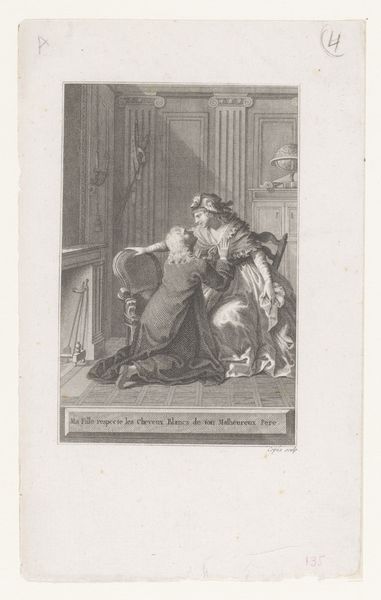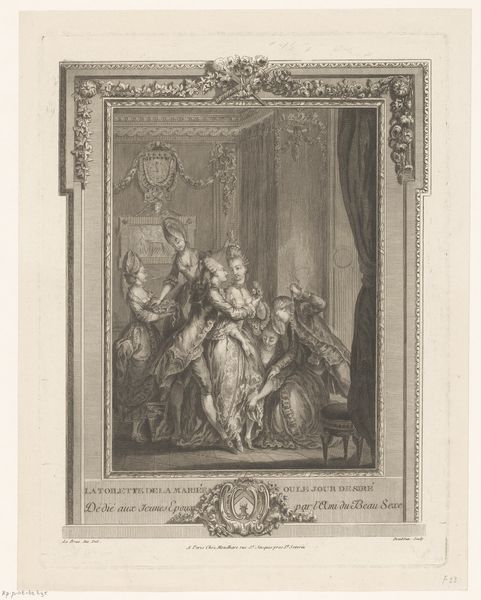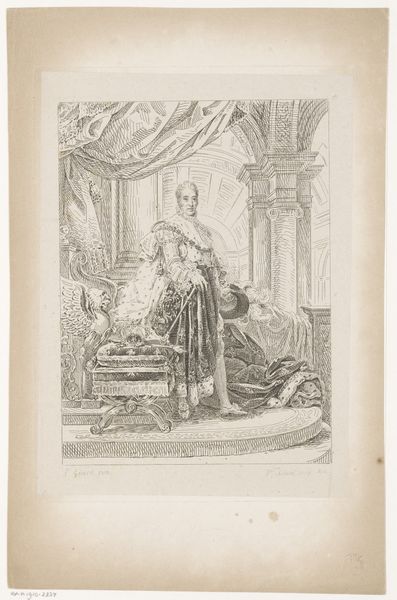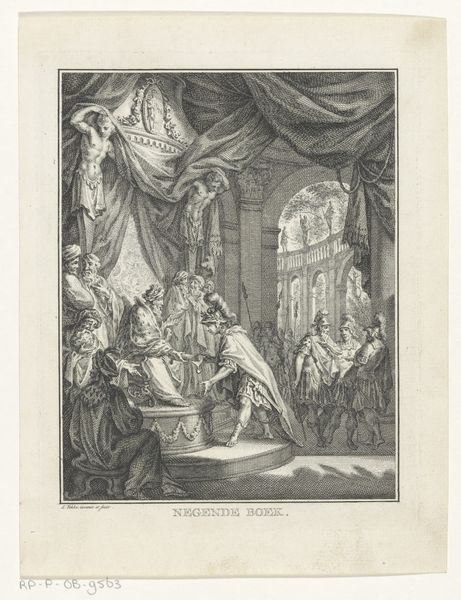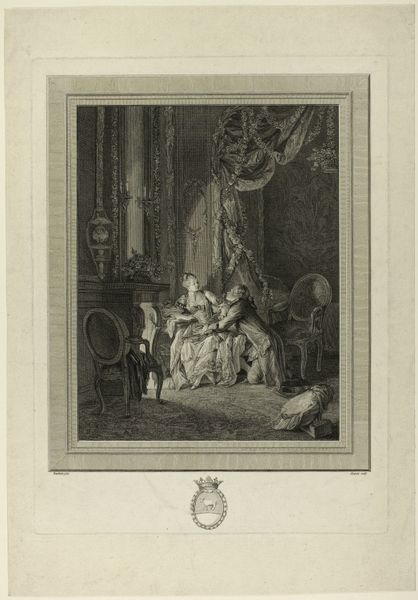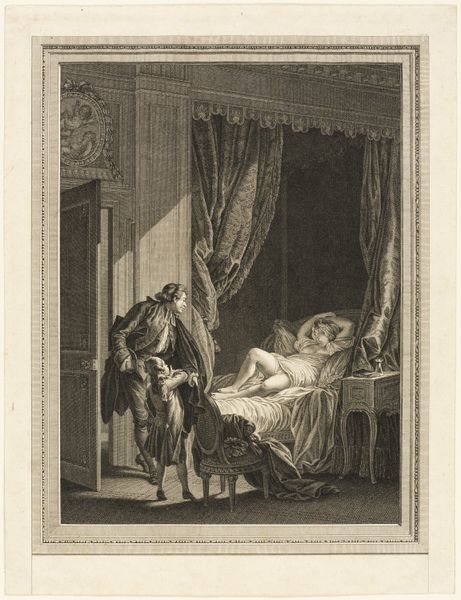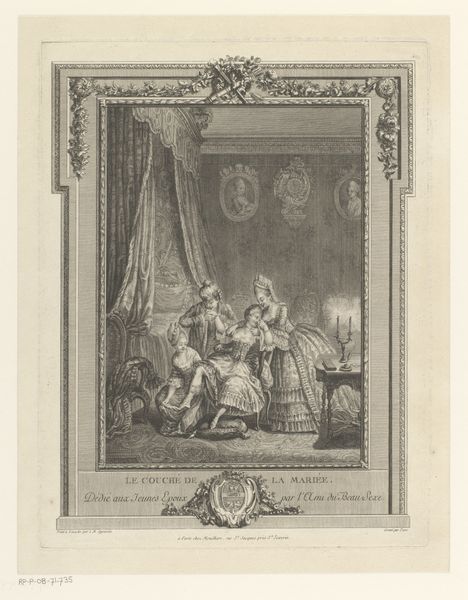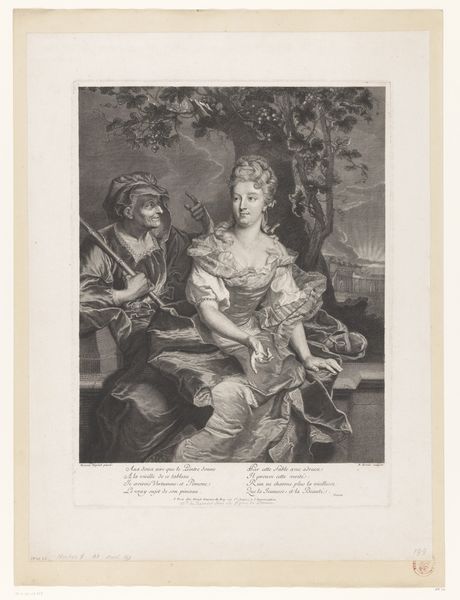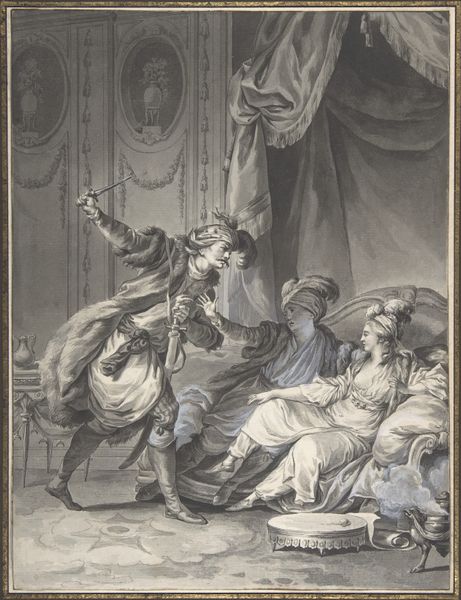
Dimensions: Sheet: 17 3/16 × 12 1/2 in. (43.6 × 31.7 cm) Plate: 15 3/8 × 11 5/16 in. (39 × 28.7 cm)
Copyright: Public Domain
Curator: Here we have "L'amour européen," a work attributed to Pierre François Basan, created between 1751 and 1797. It’s an engraving, currently residing here at the Metropolitan Museum. Editor: The first thing that strikes me is the elaborate textures – the ruffles, the draping fabric. You can almost feel the weight and stiffness of those materials, how much work went into producing them, and now reproducing them as line on paper. Curator: The work definitely echoes a preoccupation with genre scenes and what one might call 'intimism'— the small indulgences of life rendered in a light almost of secrecy, but here laid out quite publicly as a print. Look at the figures. Editor: Right, we have this kneeling gentleman seemingly pledging devotion to a woman reclining with a mirror and lavish cushions. The image seems to suggest the ritual of courtship within this very confined, almost staged interior, a tiny theater of intimacy constructed from silks and ceremony. Curator: Indeed, we have clear allusions to a kind of courtly love being re-imagined or perhaps re-packaged here within the blossoming bourgeois culture. Notice the Cupid figures hovering above – emblems of romance in this rococo scene. And isn’t it interesting that this kind of overt performance becomes commodified into prints circulating through society? It changes its semiotic function. Editor: Absolutely. Engravings like this were often produced for mass consumption. This one, for instance, brings aristocratic romance into more accessible spheres – homes of merchants, shops and meeting places of middle-class audiences. That gesture, that performance of love becomes something that’s circulated, almost democratized by production. Curator: Exactly. The print serves as a form of cultural transmission – an echo of Baroque ostentation refashioned for a Romantic sensibility. A visual marker. Editor: Well, by looking at how those aristocratic ideals got reproduced for a wider audience, we can see what parts were embraced, or transformed by other communities as they consumed them. Curator: I’ve really learned to appreciate these nuances through the materiality, and symbols employed in works like this. The drawing style offers access to so many different lenses. Editor: I concur, there’s value in examining the labor of both love and the reproduction involved here – it invites questions of how intimacy is crafted and marketed as commodity culture shifts in the 18th Century.
Comments
No comments
Be the first to comment and join the conversation on the ultimate creative platform.
